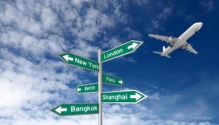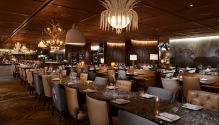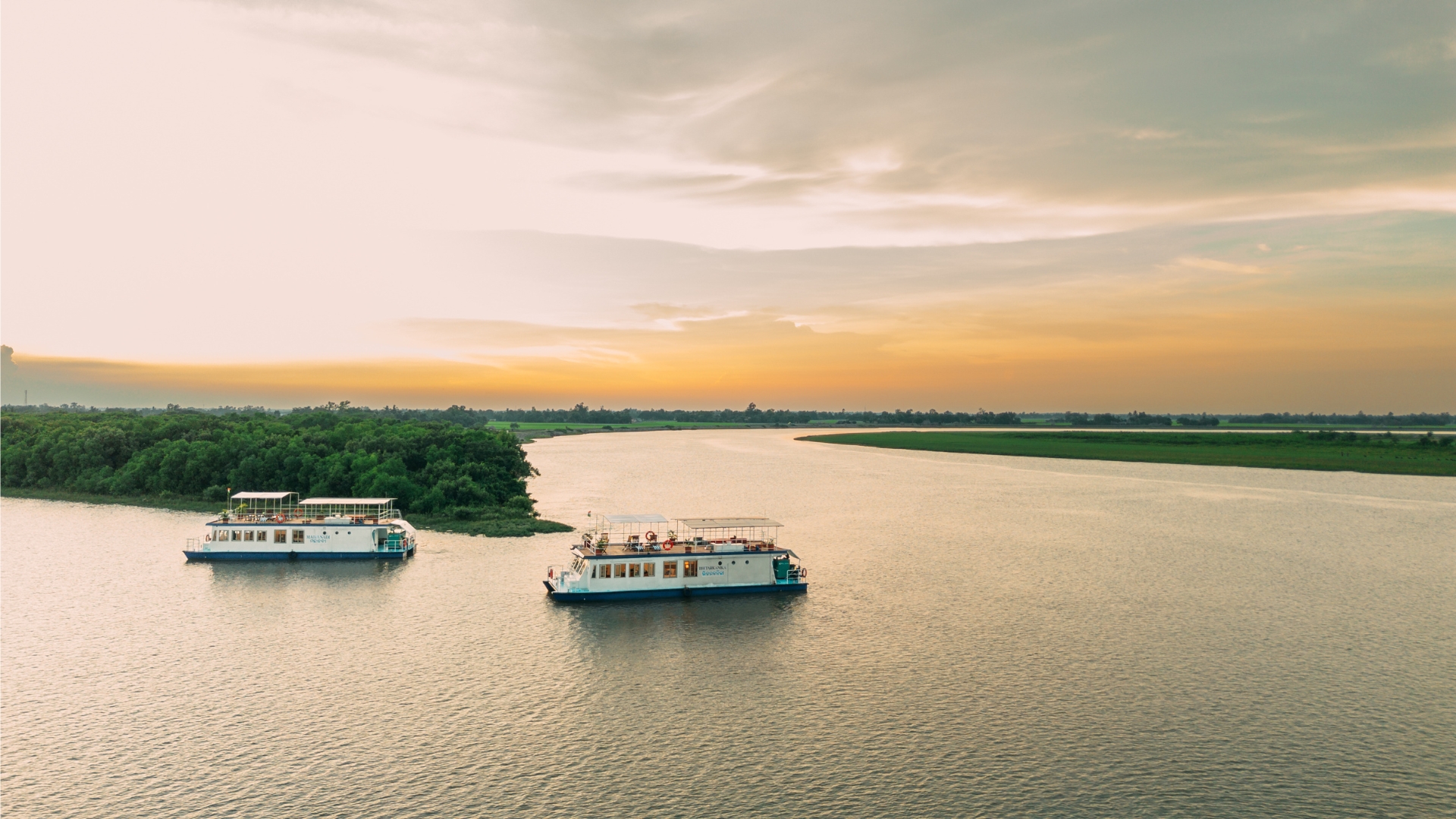Cruising On India’s River Highways
River cruise tourism, already growing at record levels, is set to expand even faster on the back of new policies and private sector investment. Are they the next frontier of luxury travel?
By Suman Tarafdar
Long, long ago—well, nearly two decades ago—when in Kolkata for a hotel opening, I was invited to go on a cruise down the Hooghly. It was a hired vessel, which sailed from Outram Ghat to Belur and Dakshineshwar, both just north of Kolkata. Outram Ghat, along with Princep Ghat, was one of the most important entry points for ships to India. At the time, most ferries, largely decrepit, were used locally to cross the Hooghly, a practice that still continues. Not quite in pristine shape, the vessel we were in had a capacity of 150 passengers, and was occasionally used for parties and events, we were told. On average, it operated less than a month annually, the captain informed mournfully.
Two decades on, the same stretch, and more, are now home to some of the most expensive river cruises in the country. Yes, the scenario for river cruises has moved on considerably, growing at a record pace. Of course, river cruise tourism has had strong roots in some parts, such as in the backwaters of Kerala, especially in and around Lake Vembanad and Alappuzha, Dal Lake in Kashmir, Sundarbans, downstream Zuari and Mandovi rivers in Goa, amongst others.
According to Statista, by 2025, it is projected that the revenue in the cruise market will reach US$229.96m in India. The revenue is expected to display an annual growth rate (CAGR 2025-2029) of 8.53%, resulting in a projected market volume of US$319.05m by 2029. The number of users in the cruise market is expected to amount to 1.20 million users by 2029, while the user penetration is expected to increase from 0.03% in 2025 to 0.08% by 2029. The average revenue per user (ARPU) is expected to be US$490.11.
Modern river cruising in India arguably started with Assam Bengal Navigation (or ABN), an Indo-British family-owned joint venture in 2002, when Andrew Brock and Ashish Phookan "both jumped at the chance to explore this exciting idea together". Two decades later, and with four cruise ships and houseboats, ABN is the most experienced operator.
River cruises have taken off in India. The Cruise Bharat Mission (CBM) was launched in September 2024 and aims to boost the tremendous potential of cruise tourism in the country, both for sea and inland waterways. CBM aims to double cruise passenger traffic within five years; i.e. by 2029, up from 4.71 lakhs cruise passengers in FY 2023- 24. CBM specifically aims to target 1.5 million river cruise passengers over more than 5,000kms. of operational waterways in India. The number of operational National Waterways has grown from three in 2014-15 to 24 by 2023-24, with a target of 29 by 2024-25.
The potential of river cruise tourism in India is significant as the country has a network of 110 navigable waterways of more than 20,000kms. in length, connecting around 400 rivers. CBM aims to create 400,000 jobs in the cruise sector by 2047, with river cruises contributing significantly due to their labour-intensive operations, such as crew, guides, and hospitality staff.
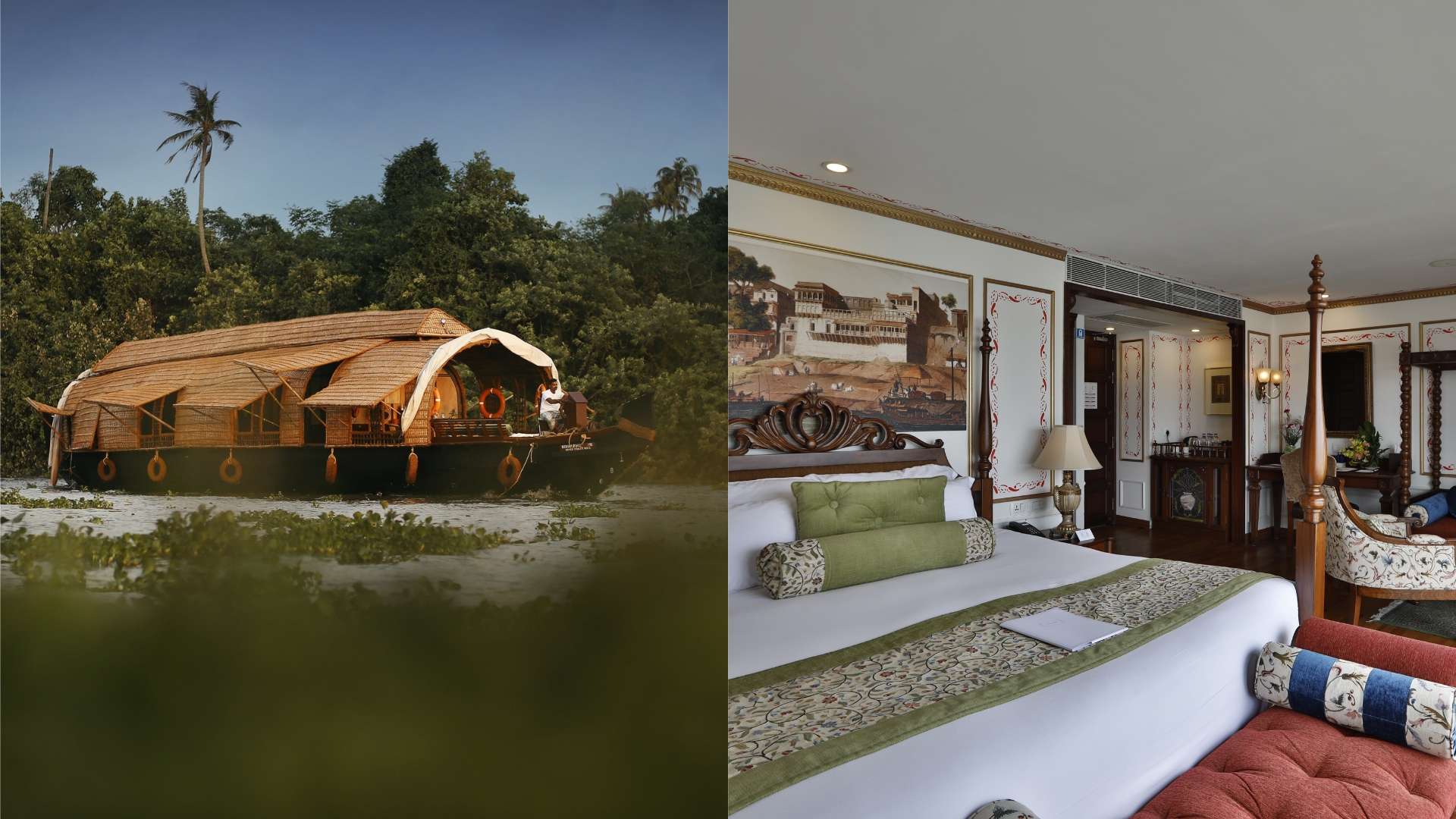
A kettuvallam or houseboat on Lake Vembanad is a grand sight. (Right): An inside view of the Oberoi Vrinda.
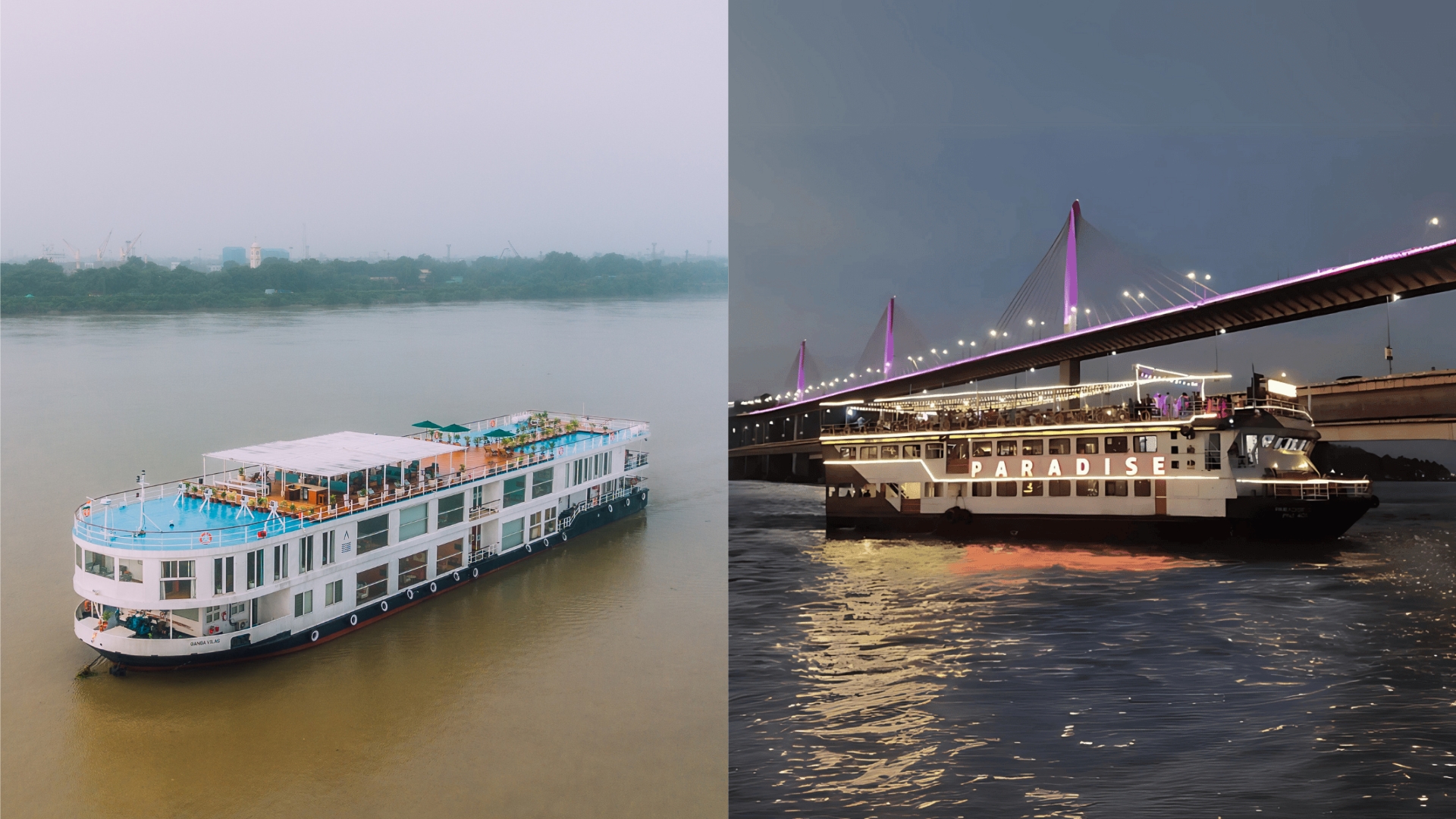
Traversing for 51 days across two countries, five states, 27 river systems, Antara's MV Ganga Villas' 3,200 km route is the longest in the world; (Right): Day Cruises on the Mandovi offer picturesque views of the Panjim promenade.
The development of inland waterways holdsgreat promise for transforming India’s logistics sector. "By leveraging our extensive network of rivers and water bodies, we can create a sustainable, cost-effective, and efficient mode of transportation for goods," the Union Minister of Ports, Shipping and Waterways (MoPSW), Sarbananda Sonowal recently said while inaugurating the Inland Waterways Terminal (IWT) at Jogighopa, which is expected to serve as an international port of call for Bhutan and Bangladesh, facilitating seamless movement across northeast India.
"We are attempting to rejuvenate the support system of inland waterways so that we decongest railways and roadways, and at the same time, provide a viable, economic, sustainable and efficient mode of transportation for both passengers and cargo operators," Sonowal said recently.
"The government’s focus on ocean and river tourism is a game-changer for India’s inland waterways," Raj Singh, the founder and Chairman of Antara Cruises (Heritage River Journeys Pvt Ltd), said in an interview to The Week recently. Antara, which has five vessels currently, is on an expansion spree and has already become known for its luxurious vessels. "This initiative not only promotes responsible travel but also positions India as a rising player in global river cruising. We see critical areas that need focus, including connectivity, amenities and safety."
Amongst the necessary upgrades, Singh suggests enhancing connectivity for better road and rail links to cruise terminals, world-class docking facilities with clean restrooms, waiting areas, safety standards and emergency protocols to build trust among travellers. "With targeted improvements and proactive policies, river tourism can become a major pillar of India’s travel industry, driving both economic growth and sustainable tourism."
In January 2023, the country’s longest river cruise was launched; it traverses 3,200kms. from Varanasi to Dibrugarh. Significantly, it uses the Ganga-Padma-Brahmaputra network across 27 river systems, five Indian states and Bangladesh.
A more recent development has been the signing of an MoU between IWAI and the Ministry of Ports, Shipping and Waterways (MoPSW) with various Delhi government agencies to develop a four-kilometre stretch of the Yamuna (NW-110) between Sonia Vihar and Jagatpur into a hub for eco-friendly cruise tourism. The project plans to deploy electric-solar hybrid boats equipped with bio-toilets and safety features, and install two HDPE jetties to support smooth operations, promoting sustainable, short-distance navigation and recreational tourism in Delhi.
IWAI has committed approximately ₹100 crore to develop cruise tourism infrastructure and experiences across Chenab (NW-26), River Jhelum (NW-49), and River Ravi (NW-84). IWAI has also entered into a tripartite agreement with the governments of Gujarat and Madhya Pradesh to start cruise operations from Kukshi to the Sardar Sarovar Dam.
The country has seen the First Inland Waterways Development Council meeting held on the vessel Ganges Queen in Kolkata. The meet, with an objective to enable inland waterways as channels of economic growth and commerce in the country, committed an investment ₹45,000 crore for the development of river cruise tourism. Of this, an estimated ₹35,000 crore has been earmarked for cruise vessels and another ₹10,000 crore for the development of cruise terminal infrastructure by 2047.
In January, a River Cruise Tourism Roadmap 2047 was launched at the inaugural session of IWDC (Inland Waterways Development Council). This roadmap focuses on four vital pillars, including infrastructure, integration, accessibility, and policy for promoting river cruise tourism. As a part of the roadmap, over 30 possible routes and tourist circuits along inland waterways have been identified for further development. To ensure sustainability, Harit Nauka, Guidelines for Green Transition of Inland Vessels and River Cruise Tourism Roadmap, 2047, was also launched.
According to an analysis by Statista, one of the key trends in the Indian cruise market is the introduction of shorter cruise itineraries to cater to the preferences of Indian consumers. Cruise operators offer weekend getaways and short trips to nearby destinations to attract first-time cruisers and young professionals. Additionally, themed cruises focusing on wellness, adventure, and cultural experiences are gaining popularity among Indian travellers.
As for the level of increase in the intervening period since my first river cruise on the Hooghly, on the same stretch, Antara now operates luxury cruising where room nights rates are at par with the most expensive ones in the city. India’s modern river journey has just begun, with lots of potential headwinds to aid a fast growth journey.
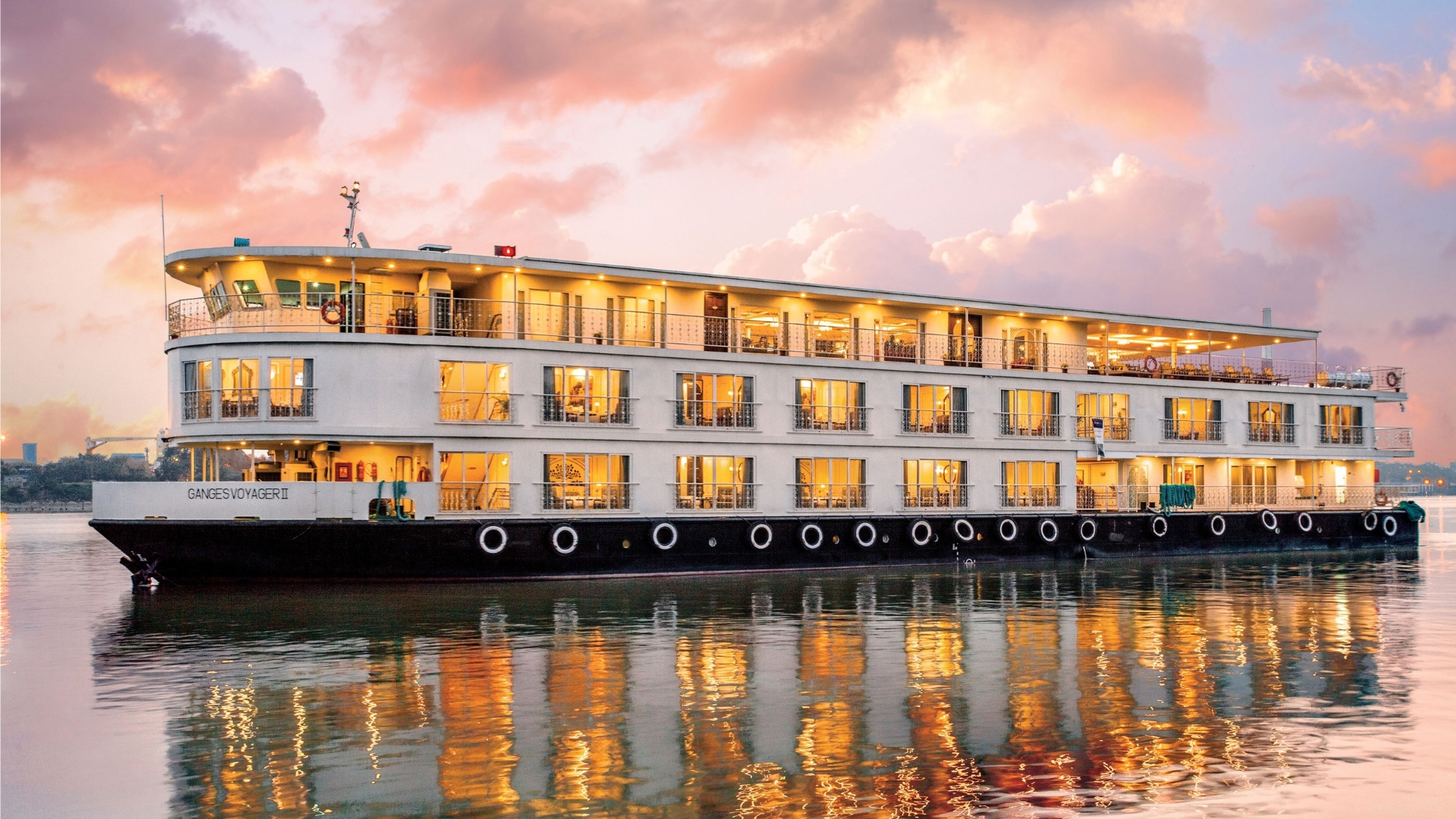
MV Mahabaahu offers a unique way of experiencing Assam.
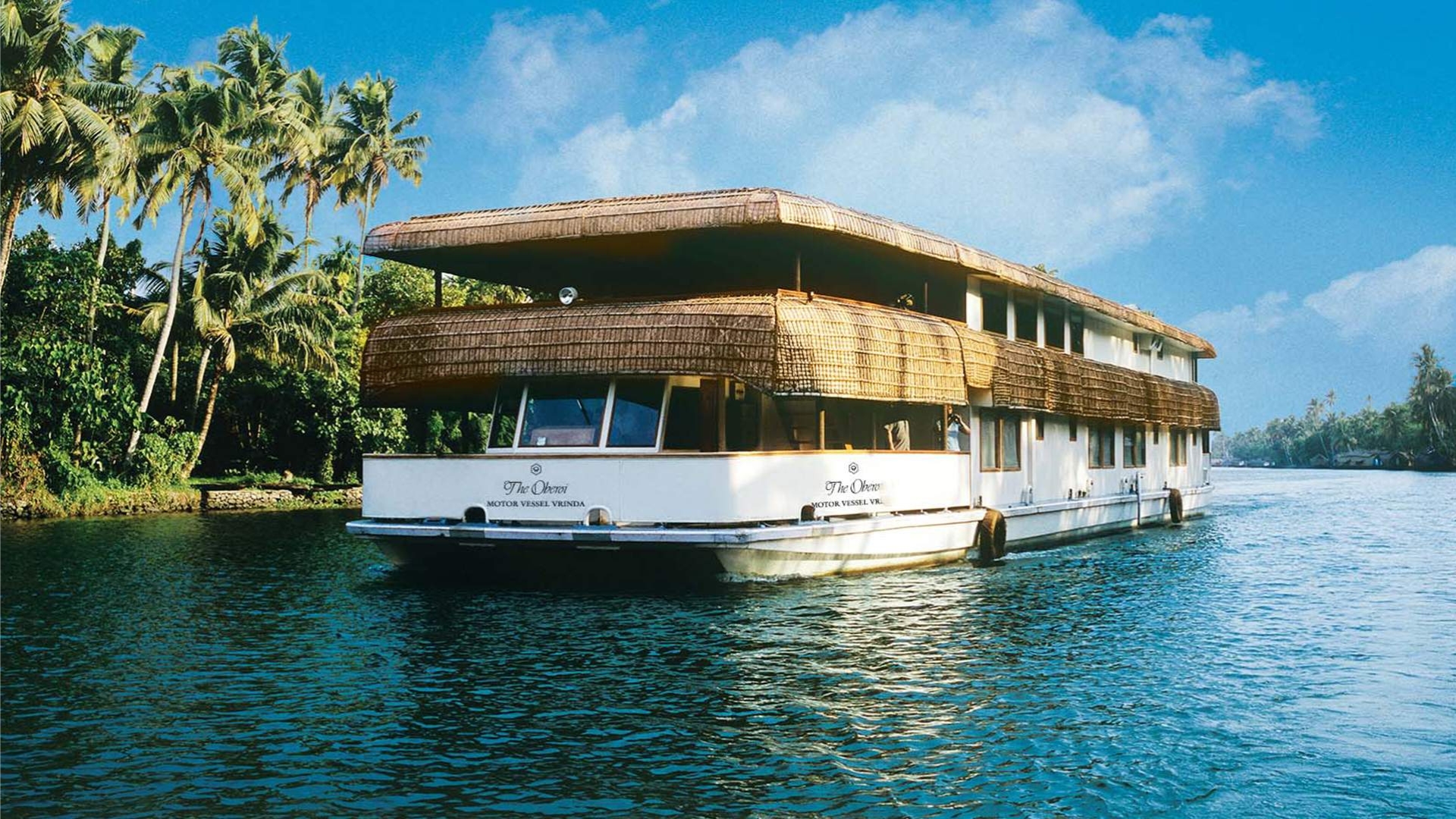
The Oberoi Vrinda gets up close to Kerala's backwaters.
By leveraging our extensive network of rivers and water bodies, we can create a sustainable, cost-effective, and efficient mode of transportation for goods.
Sarbananda Sonowal
Union Minister of Ports, Shipping and Waterways (MoPSW)












